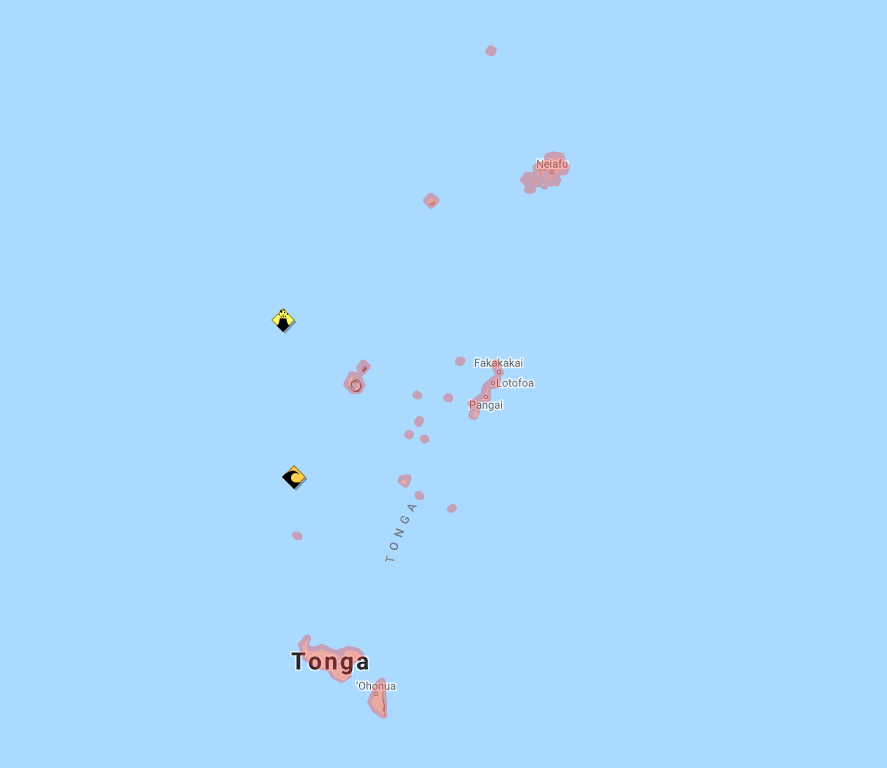The island nation of Tonga: Tsunami caused by undersea eruption ravages Pacific Island
The largest volcanic explosion in the last 30 years occurred last weekend in the South Pacific Island nation of Tonga. On Saturday (15.01), the thunderous roar of the Hunga Tonga-Hunga Ha’apai volcano could be heard from up to 10,000 kilometres away. The volcano released a huge cloud of ash up to 20 kilometres in the air and caused 15-meter tsunami waves, which raced towards the nearby inhabited islands of the Kingdom of Tonga. As a result of the eruption, tsunami warnings were issued for nations throughout the Pacific. The waves caused damage and even took lives as far away as Peru in South America. However, the most significant damage and loss of life was (likely) concentrated in Tonga.
Undersea volcano deceives automatic warning systems
Since the tsunami was caused by the undersea eruption of a volcano (equivalent to a magnitude 5.8 earthquake), rather than by a strong earthquake, many tsunami warning systems were delayed in their response to the eruption. However, A3M customers were alerted to the volcanic eruption and potential subsequent tsunami on Friday (14.01). An attentive A3M analyst recognised the danger of a possible tsunami and manually issued a warning because the automatic warning system had not yet reacted. This is why at A3M, even the most sophisticated automatic systems and programs are overseen, supported, and even replaced, when necessary, by travel security analysts.
Significant damage in Tonga
While initial reports have confirmed the deaths of three people in Tonga, the true extent of the damage and the number of victims remains unclear. Since the eruption severed Tonga’s undersea communication cables, communication between the island nation and the outside world has been extremely limited and contact has yet to be made with several islands. These include the remote islands of Mango and Fonoi, which likely experienced severe damage. However, while the main island of Tongatapu along with the capital of Nuku’alofa also experienced considerable damage, electricity and local telephone operations were able to be restored in parts of the capital. Despite this, communication with the outside world is largely only possible through satellite phones at this time. Typically, mobile internet connections are unreliable during natural disasters due to server overload or damage, therefore A3M always also sends tsunami warnings per text message. The main airport in Tonga, Fua’amotu is currently being cleared of volcanic ash and is tentatively expected to resume operations on Wednesday (19.01).
Due to the overwhelming amount of volcanic ash in the water and air, residents have been advised to wear protective masks and to only drink bottled water. Neighbouring nations have begun to prepare emergency deliveries to bring to the nation, however the relief efforts will be complicated by the strict COVID-19 regulations in place on the islands. Tonga only recently confirmed its first case of COVID-19, and after the actual tsunami, Tongan officials want to avoid a “COVID Tsunami” as a result of foreign relief efforts. The situation is further complicated by the fact that, according to experts, the volcano could erupt again and will remain highly active for several weeks, if not years.
For an overview of the A3M emergency warnings pertaining to the effects of the tsunami and volcanic eruption in Tonga, please see the following page: Official Tsunami Warning Tonga. For an overview of the other tsunami warnings issued throughout the Pacific please see:

